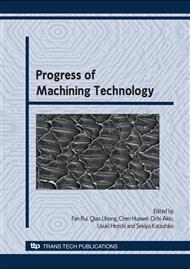p.565
p.569
p.573
p.577
p.582
p.589
p.594
p.599
p.604
An Experimental Study on Composites Machining Using Abrasive Water Jet Technology
Abstract:
Composite when machined with conventional technique often results in fibre damage, interlaminate failure, poor hole quality and high tool wear rate. The flexibility and cool cutting characteristics of the AWJ make it an important tool for cutting applications of new materials such as composites. It has been shown that using AWJ cutting with optimal parameters for Bakelite, interlayer GFRP and normal GFRP can be a viable and effective alternative with good kerf quality and few problems such as thermal effects, delamination and burr. The empirical models of the levert of GFRP has revealed that AWJ technology has a great of advantages on machining complicate shaped and interstitium workpieces
Info:
Periodical:
Pages:
582-585
Citation:
Online since:
February 2009
Authors:
Keywords:
Price:
Сopyright:
© 2009 Trans Tech Publications Ltd. All Rights Reserved
Share:
Citation:


